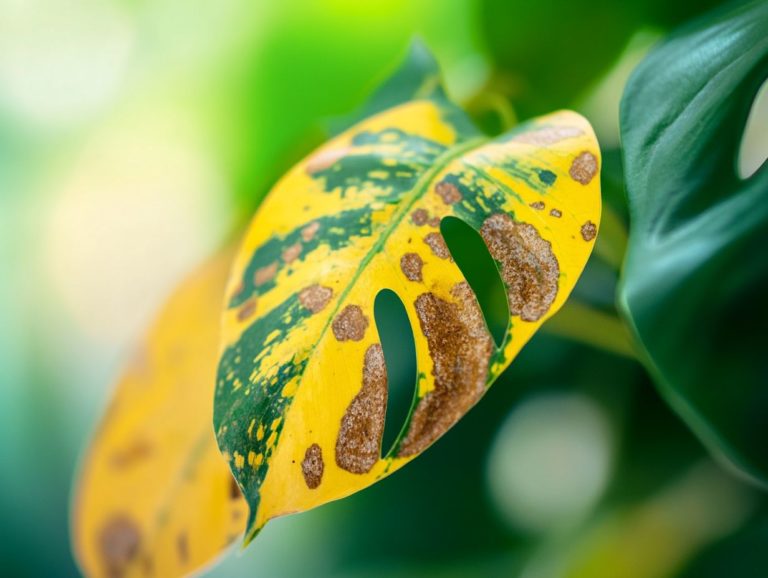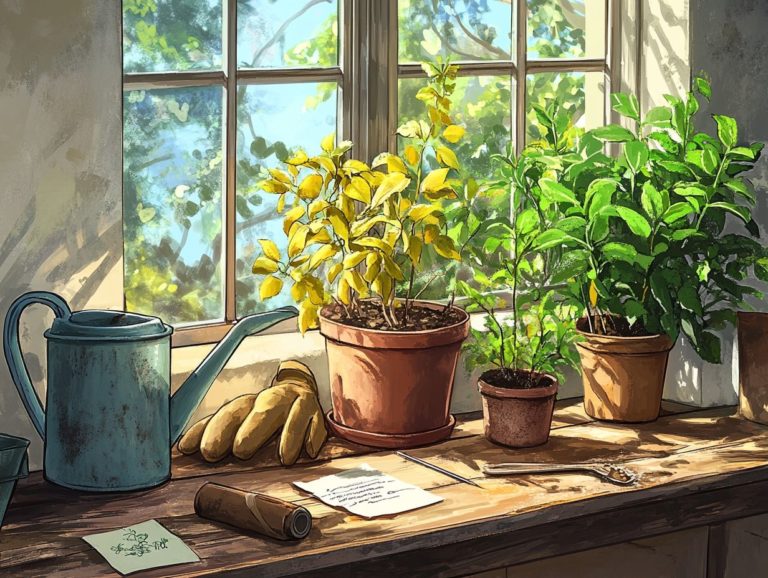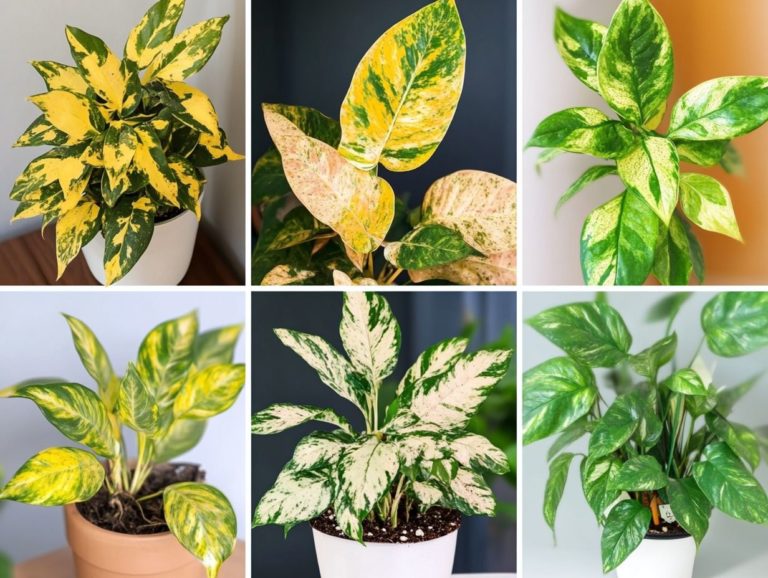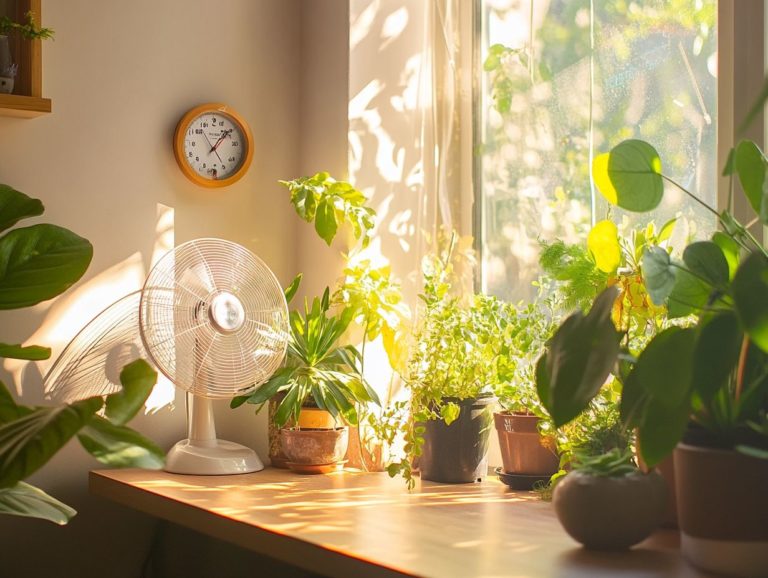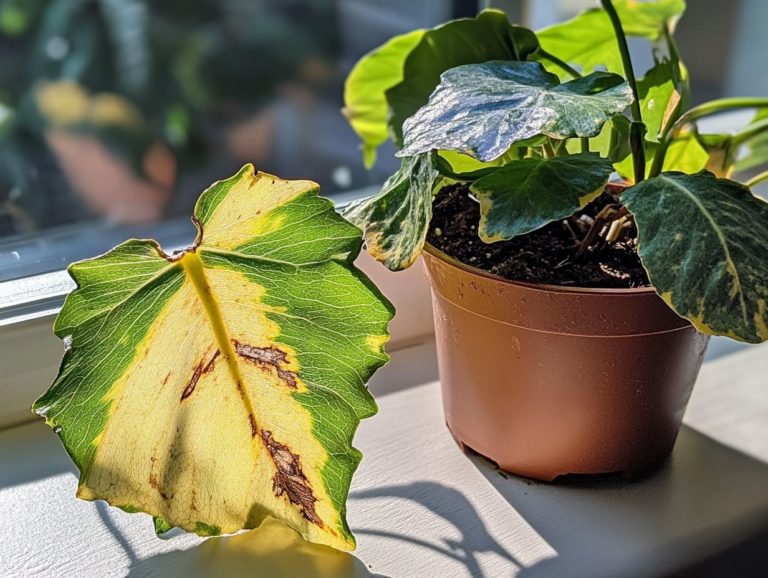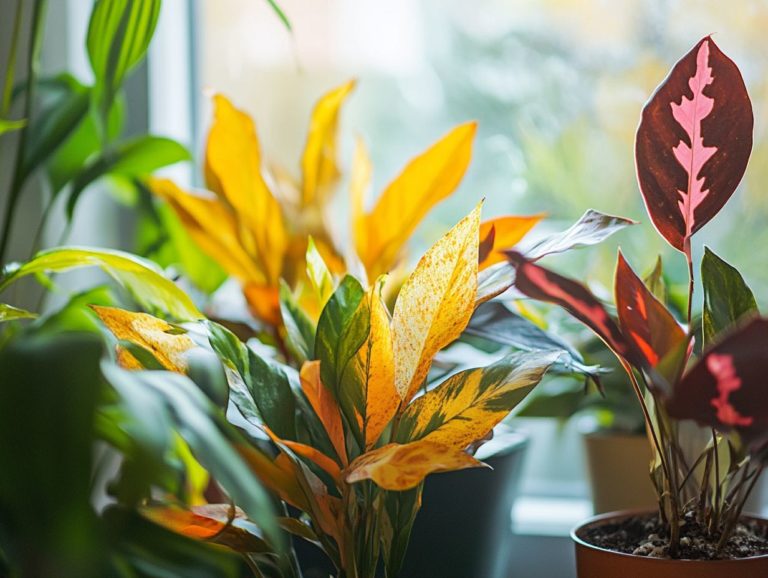How to Spot Nutrient Burn in Indoor Plants
Indoor gardening can be a truly rewarding hobby, but it does come with its own set of challenges one of which is nutrient burn.
This phenomenon arises when your plants receive an excess of fertilizers, resulting in visible damage that no gardener wants to see.
You ll delve into what nutrient burn actually is, how to identify nutrient burn symptoms, and the common causes behind it.
More importantly, you ll discover effective treatments and preventative measures to ensure your indoor plants thrive, free from the worry of nutrient imbalance.
Let s transform your indoor garden into a thriving oasis!
Contents
- Key Takeaways:
- Understanding Nutrient Burn in Indoor Plants
- Identifying Signs of Nutrient Burn
- Common Causes of Nutrient Burn
- Addressing Nutrient Burn in Indoor Plants
- Preventing Nutrient Burn in the Future
- Frequently Asked Questions
- What is nutrient burn in indoor plants?
- What are the signs of nutrient burn in indoor plants?
- How can I prevent nutrient burn in my indoor plants?
- Can overwatering cause nutrient burn in indoor plants?
- How do I treat nutrient burn in my indoor plants?
- Are certain types of plants more prone to nutrient burn?
Key Takeaways:
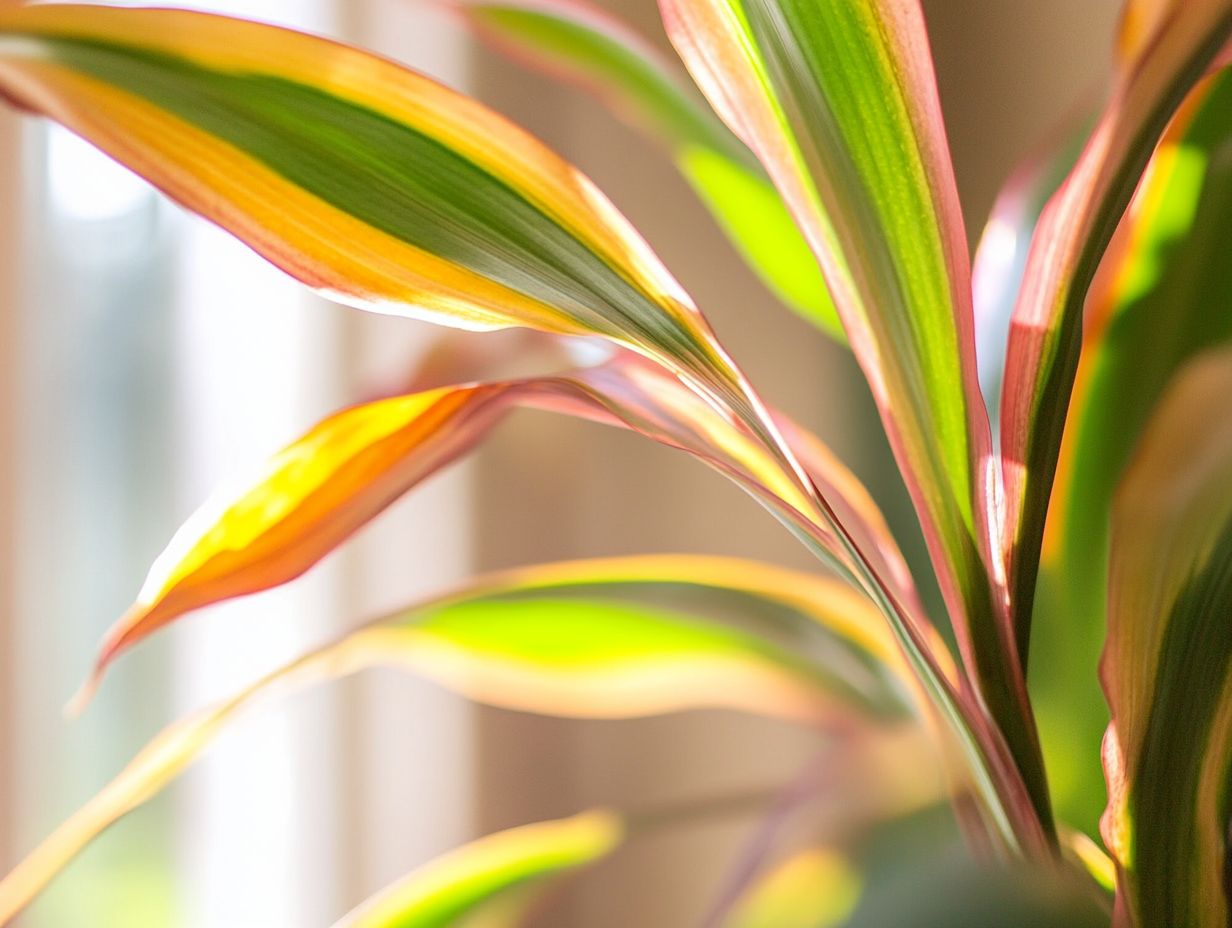
- Nutrient burn is a common issue in indoor plants caused by an excess of nutrients, resulting in yellowing leaves or brown tips on leaves.
- Signs of nutrient burn include discolored and distorted leaves, stunted growth, and wilting.
- Monitor your nutrient levels regularly to prevent nutrient burn!
Understanding Nutrient Burn in Indoor Plants
Grasping the concept of nutrient burn is essential for anyone dedicated to indoor plant care. This is especially important when caring for delicate species such as cannabis plants.
Nutrient burn usually arises from overfertilization. An excess of nutrients creates symptoms that can stifle your plants’ growth, rather than enhance it. This condition can present itself in various forms, impacting not just the visual appeal of the leaves but also the overall health of the plant.
Effective nutrient management is critical for the health of your plants. Monitoring pH levels is crucial to ensuring optimal growth for your cherished green companions.
What is Nutrient Burn?
Nutrient burn is a condition you ll want to avoid at all costs. It arises from an overabundance of nutrients in your growing medium, which can lead to toxicity and harm your plants’ health.
This often happens when the concentration of nutrient solutions exceeds what your plants can effectively absorb. A buildup of salts around the root zone can occur. As this saturation continues, you may notice signs like leaf tip burn, yellowing, and stunted growth in your plants.
Maintaining a well-balanced nutrient composition is essential; without it, the risk of nutrient burn skyrockets. While nutrient solutions are formulated to promote vibrant growth, an imbalance can lead to detrimental effects.
Regularly monitoring your nutrient levels is vital. By ensuring a harmonious relationship among both macronutrients (nutrients your plants need in large amounts) and micronutrients (those needed in smaller amounts), you not only prevent toxicity but also encourage robust plant development.
Identifying Signs of Nutrient Burn
Identifying the signs of nutrient burn is crucial for maintaining the health of your plants. Early detection can safeguard against irreversible damage.
You ll often notice symptoms manifesting visually: yellowing leaves, burnt leaf tips, and, in some cases, curling leaves all indicators that your plant is grappling with nutrient toxicity or an imbalance in nutrient ratios.
By conducting regular visual inspections of your cannabis plants, you can catch these early warning signs before they evolve into more serious problems.
Visual Symptoms to Look Out For

You re likely to notice yellowing leaves and burnt leaf tips as some of the most common indicators that your plant is overwhelmed by excessive nutrients.
These signs can point to a crucial imbalance in nutrient levels, making it difficult for your plant to effectively absorb what it needs. As the situation escalates, you might also see leaf curling a key warning sign that indicates stress and a pressing need for intervention.
Recognizing these visual cues is essential for any gardener. Timely action can set the stage for recovery. By understanding the implications of nutrient burn and identifying light burn in indoor plants, you can adjust your fertilization practices, helping your plants get back on track and thrive once more.
Common Causes of Nutrient Burn
Common causes of nutrient burn often arise from overfertilization. When nutrient levels and ratios are off, it can lead to nutrient lockout, which means your plants cannot absorb nutrients because of imbalances. This prevents your plants from absorbing the essential elements they need to thrive.
Possible Reasons for Nutrient Imbalance
Possible reasons for nutrient imbalance in your plants could stem from improper nutrient management. This might skew nutrient ratios and lead to inadequate nutrient solutions.
The condition of your soil is pivotal for nutrient availability. Soil pH is a key factor that influences nutrient uptake. When the pH strays from the optimal range, certain nutrients can become overly abundant, causing toxicity, or they can become locked out, leading to deficiencies.
Regularly monitoring soil pH gives you the power to make timely adjustments. This helps maintain a balanced environment that facilitates the proper uptake of essential elements.
Understanding nutrient ratios is crucial. Keeping the right balance helps you prevent complications like nutrient lockout or toxicity, as well as root damage. This ensures your plants receive everything they need to flourish.
Addressing Nutrient Burn in Indoor Plants
Addressing nutrient burn in your indoor plants is crucial for restoring their vitality. It often starts with effective practices, such as flushing out excess nutrients from the growing medium. This step not only alleviates the immediate issue but also sets the stage for your plants to thrive once again.
Steps to Take for Treatment and Prevention
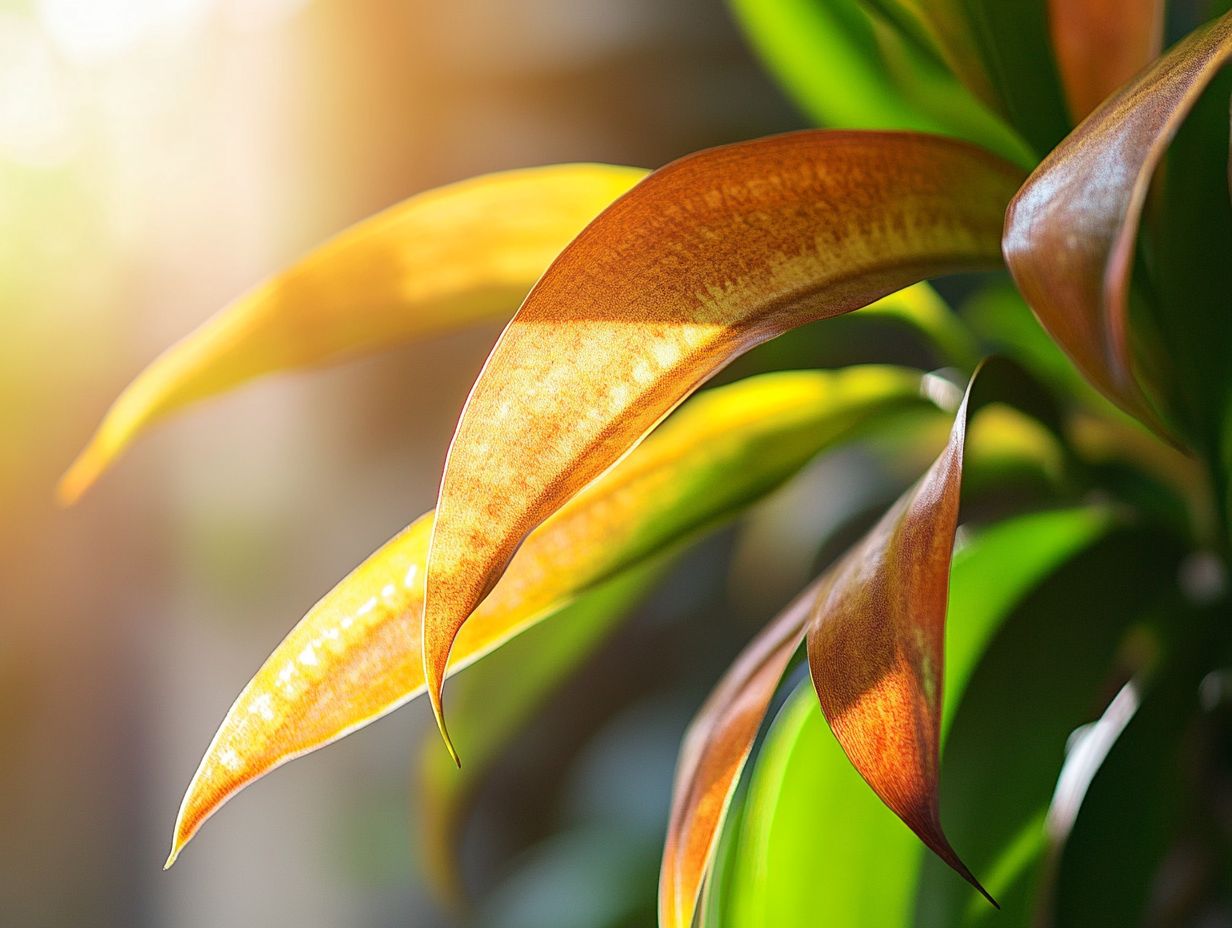
To effectively treat and prevent nutrient burn, implement sound nutrient management strategies. Regular visual inspections of your plants are essential.
This means carefully selecting nutrient solutions tailored to the specific types of plants you re growing. Ensure that concentrations remain within their tolerance levels.
By regularly monitoring your plants health through visual inspections, you can catch early symptoms of nutrient burn. Look for signs like leaf discoloration or curling.
For treating existing burn, flushing the soil with clean water is crucial. This helps dilute excess nutrients. Adjusting your feeding schedule will also help your plants recover.
As you recognize signs of recovery, such as new leaf growth and returning color, you’ll know your treatment is successful. This sets the stage for a more balanced nutrient management approach in the future.
Preventing Nutrient Burn in the Future
To prevent nutrient burn in the future, embrace best practices in nutrient management. Consider using a nutrient calculator to tailor balanced nutrients specifically to the needs of your plants.
This approach will help you maintain optimal health for your greenery. It ensures they thrive without the risk of nutrient buildup or overindulgence.
Best Practices for Maintaining Plant Health
To maintain plant health at its best, focus on careful nutrient management. Regularly monitor pH levels to meet your plants’ specific nutrient needs.
For optimal growth and to prevent deficiencies or toxicities, customize your nutrient solutions based on the developmental stage of your greens. This includes delicate seedlings or flourishing mature plants.
Aim to perform pH checks ideally on a weekly basis. This ensures nutrient uptake stays within the ideal range, preventing potential nutrient burn that can significantly hinder your plants’ vitality.
Understanding how different plants interact with nutrients will help you create effective feeding regimens. This ensures they receive a balanced mix of macro and micronutrients.
Incorporating organic matter into the soil can greatly enhance nutrient availability. This fosters robust root systems that are vital for thriving foliage.
Frequently Asked Questions
By following these steps, you can ensure a vibrant and healthy garden all year round!
What is nutrient burn in indoor plants?
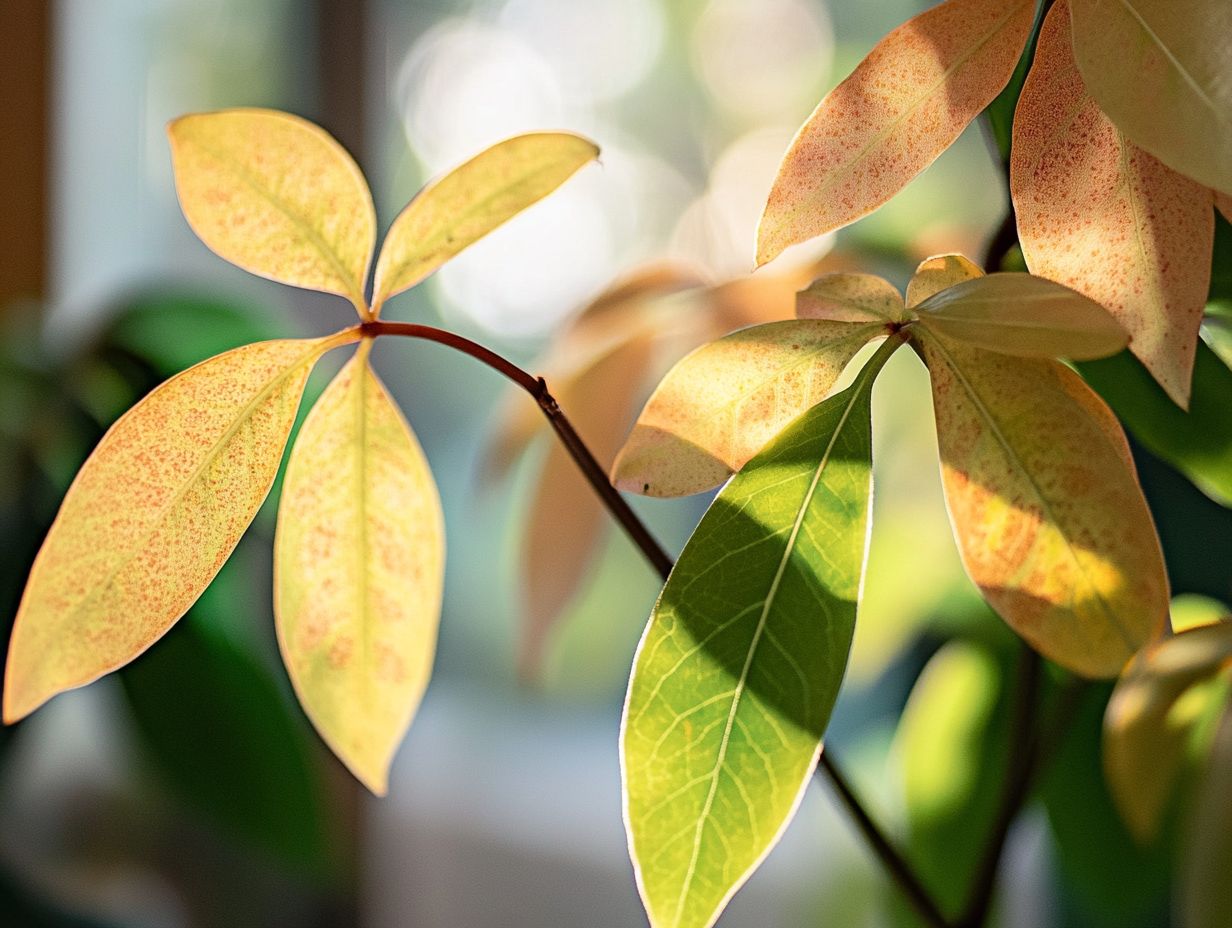
Nutrient burn occurs when indoor plant leaves get damaged from too many nutrients, especially nitrogen. This problem can prevent the plant from absorbing water, leading to stunted growth and yellowing leaves.
What are the signs of nutrient burn in indoor plants?
Look for yellow or brown tips on leaves and wilting or drooping foliage. An unusual odor from the soil can also be a sign of trouble.
How can I prevent nutrient burn in my indoor plants?
Follow the recommended dosage when fertilizing your plants. Properly water them and let the soil dry out between waterings to avoid excess nutrients.
Can overwatering cause nutrient burn in indoor plants?
Yes! Overwatering can wash away nutrients, creating imbalances that lead to nutrient burn. It’s crucial to find the right watering balance for your plants.
How do I treat nutrient burn in my indoor plants?
Take immediate action! Stop fertilizing and let the soil dry out. Flushing the soil with plain water can help eliminate excess nutrients. Trim damaged leaves and adjust your fertilizing routine to prevent future issues.
Are certain types of plants more prone to nutrient burn?
Yes, some plants like cannabis and tomatoes are more susceptible to nutrient burn. Research their specific needs and monitor soil pH to avoid nutrient toxicity.

